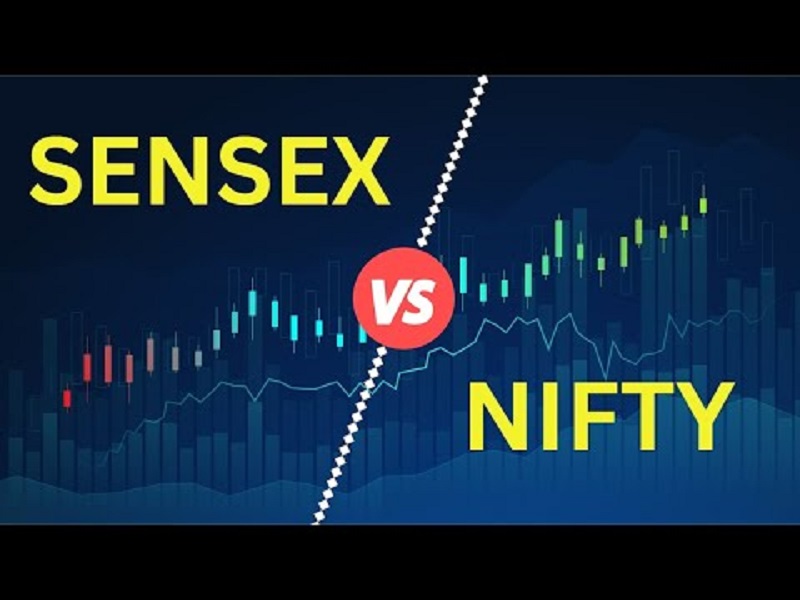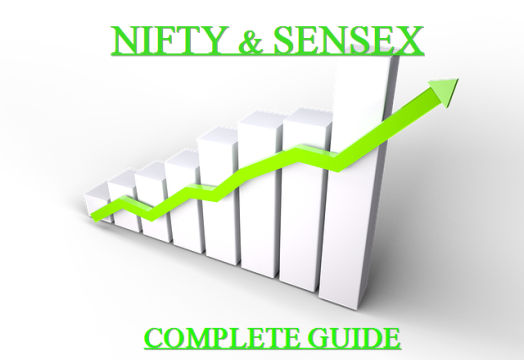Understanding Nifty & Sensex: What They Really Mean for Investors
Have you ever heard someone say “Sensex fell 500 points today” or “Nifty crossed 20,000” and wondered what exactly that means? If you’re an investor in India—or planning to be—understanding these two buzzwords is essential.
In this guide, we’ll break down what Nifty and Sensex actually represent, how they affect your investments, and why every Indian investor should pay close attention to them.
🧠 What Are Nifty and Sensex?
Both Nifty and Sensex are stock market indices. They work like a thermometer for the Indian stock market, showing how well (or poorly) it’s performing.
- Sensex (Sensitive Index):
- Launched in 1986 by BSE (Bombay Stock Exchange).
- Represents 30 top companies across major sectors.
- These companies are selected based on market capitalization, liquidity, and sector representation.
- Nifty 50:
- Introduced in 1996 by NSE (National Stock Exchange).
- Comprises 50 diversified stocks from 13 sectors.
- Managed by NSE Indices Limited (a subsidiary of NSE).
📊 Why Do Nifty and Sensex Matter?
- Market Barometers
These indices reflect overall market sentiment. A rise indicates optimism, while a fall shows investor pessimism. - Investor Confidence
Many domestic and foreign investors track them to gauge India’s economic health. - Benchmark for Funds
Mutual funds and ETFs often use Sensex or Nifty as a benchmark for performance. - Economic Indicators
Policymakers and economists use them to analyze business cycles and investor behavior.

🧭 Key Differences Between Nifty and Sensex
| Feature | Sensex | Nifty 50 |
|---|---|---|
| Launched In | 1986 | 1996 |
| Stock Exchange | BSE | NSE |
| No. of Companies | 30 | 50 |
| Base Value | 100 (1978-79) | 1000 (1995) |
| Sector Coverage | Broad but limited to 30 stocks | More diversified with 50 stocks |
💸 How Do They Impact Your Investments?
Whether you’re investing in mutual funds, SIPs, or directly in equities, here’s how Sensex and Nifty influence your portfolio:
- Market Trends: A rising Nifty or Sensex often correlates with higher NAVs (Net Asset Values) in mutual funds.
- ETF & Index Funds: Many index funds replicate Nifty/Sensex. Their performance mirrors these indices.
- Risk Signals: Sharp drops in these indices may indicate market volatility and warrant portfolio review.
🏦 Top Companies in Sensex & Nifty
Some of the big names you’ll see in these indices:
- Sensex Giants: Reliance Industries, HDFC Bank, Infosys, ICICI Bank, TCS
- Nifty Additions: Adani Enterprises, Tata Consumer, Hindalco, SBI, Larsen & Toubro
Note: The composition of these indices changes periodically based on performance and eligibility.
📈 How Are They Calculated?
- Sensex uses the free-float market capitalization method.
- Nifty also uses the free-float market cap weighted average.
What is Free-Float Market Cap?
Only the shares that are available for trading (excluding promoter holdings) are considered for calculation, ensuring the index reflects real market sentiment.
🔍 Should Retail Investors Track Nifty & Sensex Daily?
While it’s good to stay informed, you don’t need to obsess over daily movements unless you’re a trader. For long-term investors, use these indices to:
- Understand market direction.
- Time SIPs or large lump-sum investments.
- Compare your portfolio performance.
🧩 Pro Tip: Don’t Invest Based on Index Movement Alone
Many retail investors panic-sell when Sensex drops or rush to buy when Nifty hits new highs. A better approach is goal-based investing and asset allocation—not chasing index highs or lows.
🏁 Conclusion: A Compass, Not a Crystal Ball
Nifty and Sensex are like compasses—they show you which direction the market is heading. But they aren’t crystal balls. Don’t treat them as predictors of what your stock or fund will do tomorrow.
Stay informed, stay diversified, and align your investments with long-term financial goals—not just index numbers.
Read More:https://wealthfitlife.com/top-7-best-investment-apps-in-india-for-2025/
❓ FAQs About Nifty & Sensex
1. What does it mean when Sensex falls 500 points?
It means the combined market value of the 30 Sensex companies has dropped, often due to negative news or global cues.
2. Are Nifty and Sensex the same?
No, they are from different stock exchanges and have different company compositions.
3. How often do companies in Nifty/Sensex change?
Generally, every 6 months, based on company performance, liquidity, and compliance.
4. Can I invest directly in Nifty or Sensex?
Not directly, but you can invest through index funds or ETFs that track them.
5. Which is better: Nifty or Sensex?
Both are good indicators. Nifty is broader with 50 companies; Sensex is more concentrated but older.
6. Is a rising Sensex always good?
Not necessarily. Sometimes a few big stocks rise and lift the index, even if the broader market is weak.
7. What affects Nifty and Sensex movements?
Corporate earnings, interest rates, inflation, geopolitical events, and global market trends.
8. Do beginners need to track indices?
Yes, at least monthly. It builds market awareness and helps you understand investment trends.
9. Are these indices only for equity markets?
Yes, they track equity performance, not debt or commodity markets.
10. Where can I track live Nifty and Sensex?
On websites like NSE India, BSE India, and financial news portals.
📚 Academic References & Resources
- NSE India. (2025). Understanding Indices. Retrieved from https://www.nseindia.com
- BSE India. (2025). About Sensex. Retrieved from https://www.bseindia.com
- Reserve Bank of India. (2024). Financial Stability Report.
- NISM (2023). Equity Markets Module. National Institute of Securities Markets.
- SEBI. (2024). Investor Education. Retrieved from https://www.sebi.gov.in
- Damodaran, A. (2012). Investment Valuation: Tools and Techniques for Determining the Value of Any Asset.
